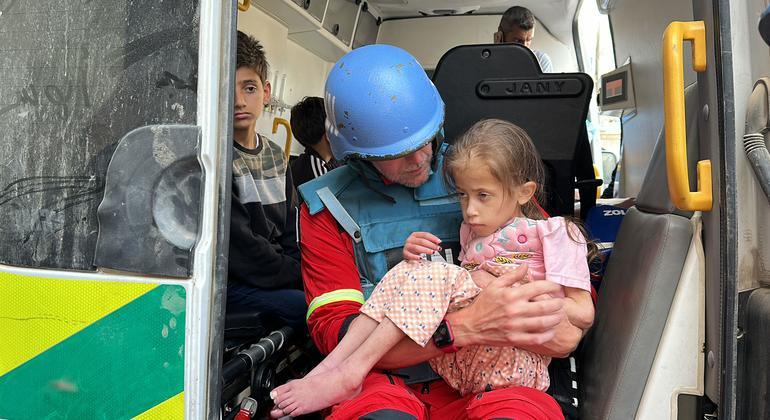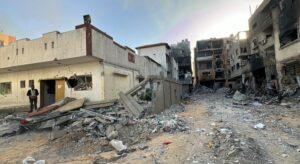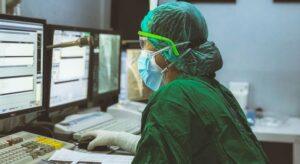From laboratories to battlefields, the United Nations’ specialized health agency has been dedicated to the well-being of all since 1948. It is guided by science and supported by its 194 member countries, including the United States, a co -founder who announced plans to step down on Monday.
What has the WHO done for the world? The short answer is: a lot. The UN agency is currently working with its members and on the front lines of health in more than 150 locations and has achieved numerous public health milestones.
WHO and partners are providing COVID-19 and other vaccines to isolated communities, including in Kuvamiti, Solomon Islands. (deposit)
Here’s what you need to know about the largest health organization on the planet:
Dealing with emergencies
Faced with crises, conflicts, the persistent threat of epidemics and climate change, WHO has responded, from the wars in Gaza, Sudan and Ukraine, to ensuring the arrival of life-saving vaccines and supplies medical services in remote or dangerous areas.
As health care faces unprecedented risks, in 2023 the WHO has documented more than 1,200 attacks affecting workers, patients, hospitals, clinics and ambulances in 19 countries and territories, resulting in more than 700 dead and nearly 1,200 injured.
Indeed, WHO teams often go where others do not go. They regularly evacuate injured patients and provide life-saving equipment, supplies and services in conflict or disaster-ravaged areas.
Watch below how WHO teams helped roll out a multi-agency polio vaccination campaign in the besieged and war-torn Gaza Strip in September 2024, when the fast-spreading virus re-emerged 25 years after its eradication:
Monitor and manage health crises
Every day and night, teams of WHO experts review thousands of pieces of information, including scientific articles and disease surveillance reports, looking for signals of outbreaks or other threats to health. public health, from avian flu to COVID-19.
WHO is mobilizing to prevent, detect and respond to infectious disease outbreaks while strengthening access to essential health services.
That means boosting the capacity of hospitals to do everything from delivering new babies to treating war wounds and training health workers.

A laboratory scientist works at a WHO Collaborating Research Center in Thailand. (deposit)
Eliminate disease worldwide
A wide range of diseases and conditions are ripe for elimination if appropriate public health policies are implemented, including neglected and vector-borne infectious diseases, sexually transmitted infections, mother-to-child transmitted diseases child and those that vaccines can prevent.
The UN health agency provides essential medicines and medical equipment while working to enable – and, where possible, strengthen – laboratory capacity to diagnose diseases.
In 2024, WHO Member States have taken several steps to address these major global health challenges. Seven countries (Brazil, Chad, India, Jordan, Pakistan, Timor-Leste and Viet Nam) have eliminated various tropical diseases, including leprosy and trachoma.
Mother-to-child transmission of HIV and syphilis has been eliminated in Belize, Jamaica and Saint Vincent and the Grenadines, and Namibia has taken a key step towards eliminating mother-to-child transmission of HIV and hepatitis B.
The WHO has also played a key role over the past seven decades, including eradicating smallpox in 1980, achieving near eradication of polio, and providing lifesaving assistance to Gaza during the recent war.

A WHO mobile clinic provides services in Duhok, Iraq. (deposit)
AI and digital health
WHO is breaking new frontiers, including artificial intelligence (AI), in digital health.
As the influence of emerging AI technologies continues to grow, WHO is working to ensure their safety and effectiveness for health.
This includes new guidance published last October listing key regulatory considerations on issues such as harnessing the potential of AI to treat or detect diseases like cancer or tuberculosis while minimizing risks such as data collection. unethical data, cybersecurity threats and the amplification of bias or misinformation.

In Singapore, digital devices help patients contact their healthcare providers. (deposit)
Facing the deadly climate-related health crisis
The climate-related health crisis affects at least 3.5 billion people, or almost half of the world’s population.
Extreme heat, weather events and air pollution have caused millions of deaths in 2023, putting enormous pressure on health systems and the workforce, since the wildfires currently ravaging the west coast of the States -United until deadly flash floods in Indonesia.

An Ebola survivor in the Democratic Republic of Congo undergoes an eye exam at a WHO-supported eye clinic in North Kivu. (deposit)
Part of WHO’s response has been to protect health from the wide range of climate change impacts, which includes assessing vulnerabilities and developing plans.
The UN agency has also worked to implement response systems to key risks, such as extreme heat and infectious diseases, and to support resilience and adaptation in health-defining sectors such as water and food.
What is the WHO currently working on?
WHO is leading efforts to take a global treaty a further, deeper step to strengthen pandemic prevention, preparedness and response, following the example of the founders of the 1851 International Sanitary Conference.
The UN agency is also currently working towards its “triple billion goal”.
Set in 2019, the objectives are as follows: by 2025, one billion additional people will benefit from universal health coverage, one billion additional people will be better protected against health emergencies and one billion additional people will benefit from better health and well-being.
Who runs the WHO?
Leadership is truly international.
Based in Geneva, the UN agency is headed by Tedros Adhanom Ghebreyesus.
The currently approved biennial program budget for 2024-2025 amounts to $6.83 billion, sourced from membership contributions, as well as voluntary contributions.
WHO’s decision-making body, the World Health Assembly, is made up of its member countries, which meet annually to agree on WHO priorities and policies.
Members make decisions on health goals and strategies that will guide their own public health work and that of the WHO Secretariat to move the world toward better health and well-being for all. This involves implementing reform measures that have made the WHO more effective.




